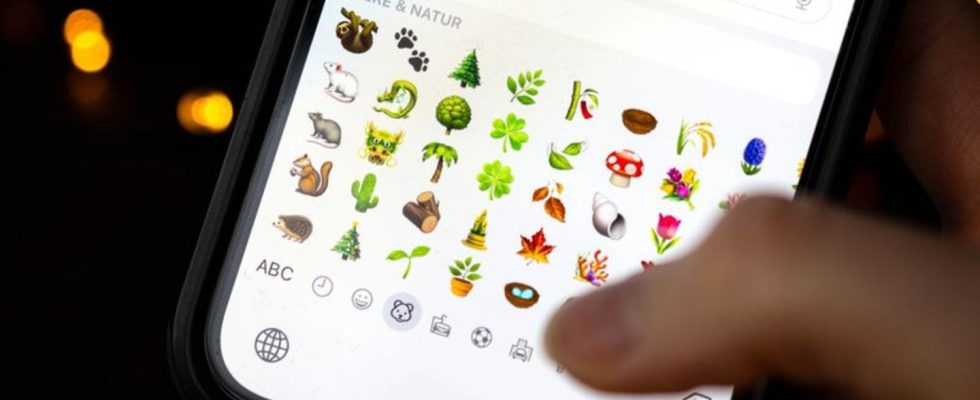Nature
Researchers: Emojis should better represent biodiversity
Researchers criticize the unbalanced selection of nature emojis
© Sina Schuldt/dpa
There is an emoji for almost everything: facial expressions, everyday objects, and food and drink. But also for animals and plants. Researchers are now criticizing the unbalanced selection of these nature emojis.
Pandas, foxes, sharks and even jellyfish and octopuses – a variety of animals can be seen through cell phones.Emojis are displayed. But for researchers, the diversity of species in small digital images does not go far enough. Nature’s biodiversity is not represented in sufficient detail, and some groups of animals and plants are severely underrepresented, as an Italian research team writes in the journal “iScience”.
Emojis are intended to raise awareness of species protection
Biologists argue that more diversity in nature emojis would make people more aware of the importance of species protection. “While the biodiversity crisis may seem far removed from the online world, in our increasingly digitalized society we should not underestimate the potential of emojis to raise awareness and appreciation for the diversity of life on Earth promote,” write the researchers led by Gentile Francesco Ficetola from the University of Milan.
For their study, they examined the so-called Emojipedia, an online reference work for emojis, and cataloged all images related to animals, plants and nature. Their conclusion: Animals are quite well represented, but plants, fungi and microorganisms are only very weakly represented. But even among the animals, some groups are underrepresented or are only portrayed superficially. While there are numerous emojis about vertebrates, there is a lack of arthropods, such as insects and crustaceans and arachnids. This is despite the fact that there are many more species of arthropods than vertebrates in nature.
The research team counted emojis from 92 animals, 16 plants, a fungus (presumably the fly agaric) and a microorganism (presumably the intestinal bacterium Escherichia coli). When it comes to animals, there is also an imbalance in the accuracy of how individual animals are depicted. There are therefore emojis that clearly represent a bald eagle or a giant panda. Other animal species are only depicted in very simplified form, such as ants, fish and crocodiles.
This bias is consistent with the current lack of societal awareness of biodiversity, the researchers said. For something to become an emoji, it usually has to be searched for on Google a certain number of times. Only then are animals or plants added to the catalog at irregular intervals.
More storage, more security
15 helpful tips for WhatsApp that will make your messenger safer and better
In the past seven years, however, a slight change in the variety of emojis has been observed, according to the biologists. They examined Emojipedia updates for the period from 2015 to 2022. In 2015 there were only 45 animal emojis, in 2022 there were 92. The number of plant emojis has also increased.


